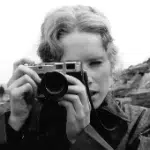Whenever I think of movie theaters, the color red immediately flashes in my mind.

So, why do cinema and theaters use red seats and red curtains? What design secrets are hidden behind this?
In fact, there are two main reasons why movie theaters are designed with the color red: historical and cultural significance, and scientific principles.
|The historical and cultural reasons
For centuries, Italy has been a coveted destination for European opera, and as a result, the combination of red and gold colors in Italian theaters became popular worldwide. When cinemas emerged as mainstream entertainment venues following theaters, the use of red in their design was also carried forward.

The Electric Cinema, a British cinema with a century-old history, is a prime example of a red cinema design.
Its interior stage design takes inspiration from 17th-century churches. The red velvet and leather-wrapped sofas, along with the red curtains and wall decorations, evoke memories of cinemas from the last century.

|The scientific reason
However, the true reason behind the prevalence of "red" as a design element in cinemas lies in the scientific principle known as the Purkinje Effect.

The Purkinje Effect primarily explains the relationship between different colors and the sensitivity of our eyes. It states that as the light diminishes, red appears darker compared to other colors.
In simple terms, when the indoor lighting becomes dim, the red color with a wavelength of around 650nm will be the first to disappear from our vision.

Therefore, when red is used in the design of movie theaters, the space appears darker after the lights are dimmed, and the images projected on the screen appear clearer with better visual quality.

On the contrary, in a pitch-black movie theater, using seats of other colors may affect the audience's attention and concentration on the screen.
CGV cinema in Hongdae, Seoul, conducted an experiment. They replaced the traditional rigid seats with colorful bean bag sofas. While the comfort of the seats improved, the visual effect of the movie-watching experience became worse.


Looking back at the design principles of red cinemas, let's explore the history of red cinemas and discuss where cinema design is heading in the future.
|The past, present and future of the red cinema
Tracing back the history of cinemas, as early as October 19, 1896, Edison's Vitascope Theater opened to the public. It was the first space specifically designed for watching movies, with 72 seats.

In 1905, the Nickelodeon cinemas, with an admission fee of just 5 cents, opened in the United States and expanded to 3,000 venues within two years.

Around 1925, the exquisite cinemas known as movie palaces began to rapidly increase. More middle and upper-class individuals started going to the movies, and red was extensively used in cinema design.


In 1931, the introduction of folding chairs in cinemas marked a significant development.
Subsequently, terms like widescreen, surround sound, 3D, IMAX, and 4D became popular, leading cinemas onto a path of diverse advancements.

Following the IMAX giant screen theater, the under-construction French cinema Ōma Cinema has presented even more futuristic design.
Architect Pierre Chican has completely reimagined the layout and structure of traditional cinemas, drawing inspiration from opera house boxes. He designed the cinema as a viewing space composed of suspended boxes and a semi-circular large screen.

This design resembles scenes from Star Wars.

Each box appears to be floating in the air, without obstructing each other. At the same time, it ensures that the audience can view the film from the optimal distance. The key point is that the seats are still red in color.


Why are movie theater seats designed in red? Ultimately, it's because such spatial design creates a better viewing experience.
From history, we can see that movie theaters, as significant spaces for shaping the movie-going experience, need to offer us more choices. They allow us to choose between 2D or 3D movies, as well as between traditional red-hued auditoriums and novel theaters. Only with such spatial design can films be presented in their optimal state before us.
























































Share your thoughts!
Be the first to start the conversation.